IndiaWilds Newsletter Vol. 9 Issue VII
Is MoEF&CC reluctant to Save Wild India?
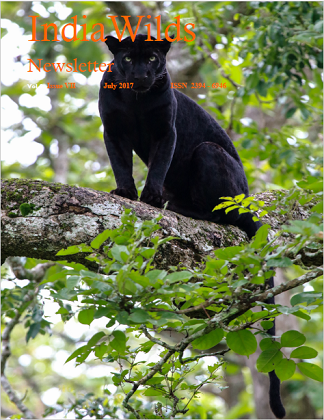
IndiaWilds Newsletter – July 2017
A recent statement by the Hon’ble Minister with additional charge of Environment, Forests and Climate Change during a function in Ashoka Garden, Ashok Vihar is worth a mention as it reflects a dichotomy in the approach of the environment and forests ministry. The Minister Dr. Harsh Vardhan said that people should plant more trees to stop the imbalance in nature as “planting of saplings is divine work”. Trees have a very important place in our lives so not only should everyone plant saplings, but should also care for the plants as a member of one’s own family. “They not only help in making the environment pure, but also provide life-giving oxygen, fruits, flowers, shade and cool the environment.” The minister also impressed upon the people to remain alert towards protection of environment and added that everyone must undertake one act for the environment every day. He also urged the people to use cycle at least once a week, as it will prove beneficial to the environment, as well as our health. The Minister also asked people to protect and conserve the flora and fauna.
When the Minister of environment and forests makes such a statement it gives an impression that that ministry and the Government is very serious about the protection of environment, forests and wildlife. Recently the Minister also expressed that “The condition of our forests, rivers, air and land is a matter of serious concern for us. The reason for this is the modern lifestyle adopted by us. Plants are another form of God, they give us free oxygen and absorb carbon-dioxide”.
However, the question that comes to our mind is whether the ministry and the minister are walking the talk?
A cursory look at the projects cleared by the Standing Committee of the National Board for Wild Life will reveal the hypocrisy.
The Hon’ble Supreme Court had banned mining activities within 1km of all National Parks and Wildlife sanctuaries. So in the past the oil extraction from rigs within 1km of national parks and sanctuaries used to be banned. However, the standing committee of the NBWL has now reversed its previous decision regarding mining of gas and has gone with the legal opinion provided by MoEF&CC that drilling for oil and gas is not covered under mining.
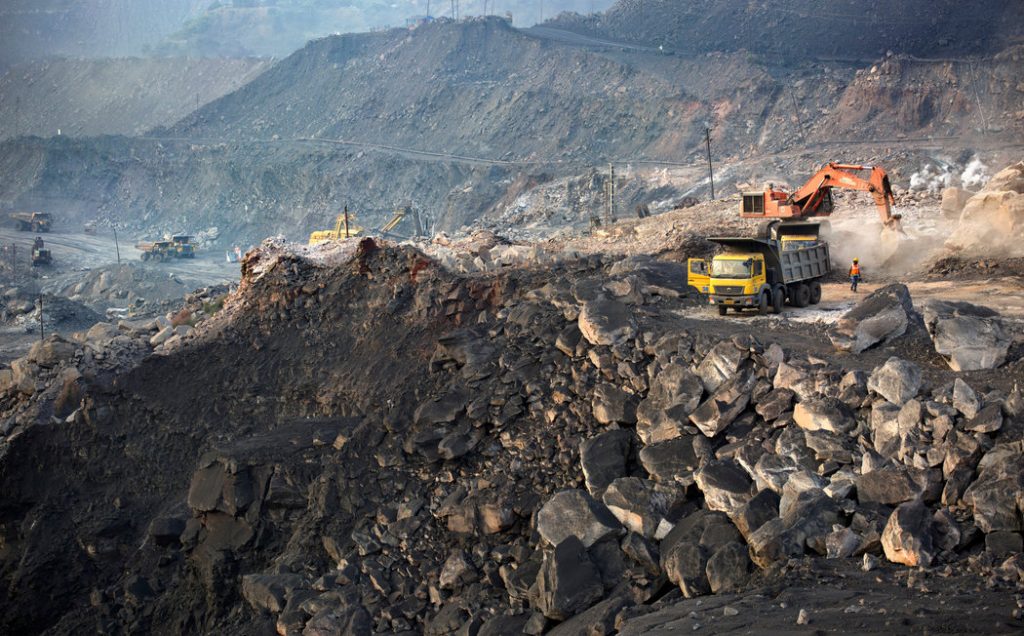
Coal mine in Jharkhand Image courtesy – online media
The MoEF&CC says that according to the EIA Notificiation (Environment Impact Assessment Notification 2006) mining is listed under 1 a and oil and gas exporation under 1b, so the Supreme court order banning mining activities within 1km of National Parks and sanctuaries is not applicable. The environment ministry is clearly trying to find a loophole. This is like killing the spirit of the judgment and the spirit of wildlife protection in this country. If one tries to understand the reason for the 1km no mining activity within National Park and sanctuaries order, then it would be clear that oil drilling is also included. Prospecting for resources under the soil whether it is metals or gases involves destruction of the habitat of wild animals and leads to pollution as well, so in 2006 the Hon’ble Supreme Court banned mining within 1km of National Parks and sanctuaries.
This effort by the environment and forests ministry is clearly aimed at skirting the Supreme Court order and mocking the Supreme Court’s resolve to help protect India’s environment, forests and wildlife. So why this double speak Mr. Minister?
These days wildlife being mowed down by railways is a regular news item. Indian Railways is a major cause of wildlife deaths in this country, however, the MoEF&CC continues to ignore these deaths and push for more railway tracks through our forests instead of looking for alternate alignments or mitigation measures.
The National Tiger Conservation Authority has mentioned that about 250 kms of tracks of Indian Railways in various parts of the country poses massive threats to the tiger’s survival in India. The NTCA has said that apart from the tiger, other wildlife like leopards, bears, elephants, vultures and crocodiles have also been killed on the train lines. Another 86 kms of train tracks also pose threat to tiger corridors between two or more national parks so that the dispersal and repopulation of tigers in contiguous habitat is severely impacted.
Since December 2016, in Madhya Pradesh four tigers have been killed by speeding trains. In Budni territorial forest about 10 kms from Ratapani Wildlife Sanctuary in the Budni-Midghat section a tigress was mowed down on 1st April 2017. Four months prior to this incident, on 30th December 2016, a tigress was found to have been killed by the Jabalpur-Bhopal intercity train in the Budni-Midghat area close to Barkheda station near Ratapani Sanctuary. This area clearly has lot of tiger movement and hence railways should contain the speed limits of the trains while passing through this area and elevated sections for tracks/underpasses and overpasses. There are proposals to convert the Ratapani Sanctuary to a tiger reserve. However, there are also plans to set up a third track through Ratapani. So the wildlife deaths will only increase in this area.
In 2008, Ratapani Wildlife Sanctuary got an in-principle approval for conversion into a Tiger Reserve. However, it is said that the Government is knowingly delaying the notification of Ratapani as a Tiger Reserve. It is because, Ratapani is spread over 890 sq. kms, after notification it would be difficult to get permissions for widening of highways, infrastructure creation and other projects.
However, it would also be pertinent to mention that the MoEF&CC the ministry which is supposed to be protecting our forests, wildlife and environment is trigger happy in disemboweling our forests by allowing linear projects which fragment the habitat and sound the death knell for many species. MoEF&CC has recently given the go ahead to the broad gauge conversion of Akola-Khandwa rail line and this will result in broadening 18kms of train lines through Melghat tiger reserve. Broad gauge means faster train speeds and hence more wildlife deaths under trains.
Other major train lines passing through forests are the 12.5km railway lines through Buxa, 29km through Rajaji, 27km through Bhadra, 47km through Dudhwa and 34 km through Sanjay Dubri National Park. There are also many places where the railway tracks are not officially in the national parks or sanctuaries but are in the migratory corridors of the elephants and cause many deaths.

Elephant dragged 400 meters to the middle of a bridge
So one can easily conclude that the wildlife conservation and infrastructure creation is not well though-out and is currently highly imbalanced with wildlife bearing the brunt of it. The National Board for Wildlife which has been packed with many “yes men” now serves as a clearing house for wildlife projects and many more projects which will devastate the ecologically fragile areas and wildlife will continue to get cleared.
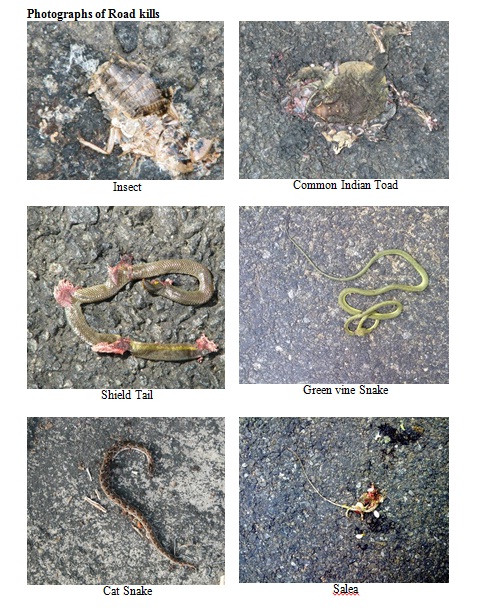
Roadkills
If saving wildlife had been the priority, then alternate alignments for railways and roads would have been considered. Unfortunately, the project proponents never bother about alternate alignments. In earlier days the speed was less and hence alternate alignments whether by road or trains used to take a lot of time. However, these days alternate alignments shouldn’t increase the time to commute due to higher speeds and hence should be the first aim if we are serious about saving whatever little is left of our wildlife and wilderness areas.
MoEF&CC, which is often headed by a junior minister, is prone to bow before the wishes of the other ministries and acts as a clearing house. Dr. Harsh Vardhan, though he is in additional charge of MoEF&CC is a Cabinet Minister and should be capable of holding his ground unlike the previous incumbent Mr. Anil Madhav Dave. However, he cannot act as a thorn in the ‘Industry at all costs’ attitude of the present Union Government.
Nevertheless, the Minister is right when he points out that there is a tradition of feeding the ants and birds in our country and thus, protection of flora and fauna is inherent in our culture. Our ancestors had handed over a pure environment as a heritage and had given some principles of living, with the help of which environment can be protected properly. Unfortunately the situation today is grim.
The reason for this grim situation can be summed up nicely by Dr. Harsh Vardhan’s words:
“Environment protection is connected to our culture, but we have forgotten this cultural heritage”.
When the country’s Union environment and forests minister makes such a statement, one can realise that the near-term fate of India’s wilderness and wildlife doesn’t seem to be rosy. It can only be changed if citizens wake up and raise their voice, because in democracies only votes matter.
Black Panther
Black leopard or Black Panther as they are commonly known, often invokes awe as they are very rarely sighted and they have an aura of mystery. Apart from the rarity the Black panther also gained popularity due to Rudyard Kipling’s character Bagheera in “The Jungle Book” where it protects Mowgli.
We were fortunate to sight a black leopard on a tree top in Nagarhole on the evening of 4th July 2017..
Conservation News:
NGT bans synthetic manja:
The National Green Tribunal (NGT) on 10th July has ordered a permanent ban on synthetic manja and nylon strings and any material that is not biodegradable for use in kite flying as it poses grave danger to the life and limb of people as well as birds and animals. The NGT had earlier placed an interim ban on synthetic Manja in December 2016.
The NGT bench headed by Justice Swatanter Kumar ordered “There shall be a total ban on the ‘manja’, which are made of nylon or any other synthetic material or are coated with synthetic non-biodegradable substances”. The bench also directed all the Governments to implement the order. “All chief secretaries of states and Union Territories are directed to enforce prohibition on manufacture and use of synthetic manja/nylon thread for flying kites throughout the country”. The ban includes cotton threads coated with glass.
Environment Ministry Approves Projects for Climate Change Adaptation in Three States
MoEF&CC has approved three projects for climate change adaptation in Rajasthan, Gujarat and Sikkim.
The National Steering Committee on Climate Change (NSCCC), under the Chairmanship of Secretary MoEF&CC, Shri Ajay Narayan Jha, approved the Detailed Project Reports (DPRs) submitted by Governments of Rajasthan, Gujarat and Sikkim for funding under the National Adaptation Fund for Climate Change (NAFCC).
Current projects address a range of climate change vulnerabilities in the States which are not addressed under the ongoing schemes of the Central and State Governments. In Rajasthan, the project builds on work carried out under Phase I of the Mukhya Mantri Jal Swavlamban Abhiyan to enhance the adaptive capacity of villages by making them self-reliant in terms of water requirement. The project in Gujarat seeks to enhance the adaptive capacity of natural resource dependent communities to climate change in targeted villages of Kachchh district. In Sikkim, the project aims to address the issue of water security which are directly identified as climate resilience building interventions under the SAPCC.
NAFCC is a flagship Scheme of Government of India, which provides 100 per cent grant to the State Governments for implementing climate change adaptation projects. The Scheme is designed to fulfill the objectives of National Action Plan on Climate Change (NAPCC) and to operationalize the State Action Plans on Climate Change (SAPCCs). During the two year period, 21 projects were approved at a total cost of Rs. 435.72 crore. The projects address vulnerabilities in climate sensitive sectors like agriculture, animal husbandry, water, forests and coasts among others. The project outcomes are expected to increase resilience and adaptive capacity of vulnerable communities and ecosystems against climate change impacts.
Environment Minister to Dedicate NCSCM to the Nation Tomorrow
The Ministry of Environment, Forest and Climate Change is started a new National Coastal Mission. The Minister inaugurated the new building of the NCSCM at Anna University campus in Chennai. The research undertaken by NCSCM will be used directly for arriving at policy decisions and for capacity building of coastal communities and other stakeholders. Six research divisions have been established at NCSCM that will combine geospatial sciences with cutting-edge research on conservation, pollution, climate change and community interface – both in mainland and islands of the country. NCSCM’s core strength is the multi-disciplinary nature of coastal system research for the well-being of coastal communities and promoting sustainable development based on scientific principles.
The Minister said that the focus of the Government in coastal states is sustainable livelihood, development of coastal communities through various R&D and policy initiatives.
The National Centre for Sustainable Coastal Management has been established with objectives – Promoting integrated and sustainable management of the coastal and marine areas in the country for the benefit and well-being of the traditional coastal and island communities; Strengthening capacity of coastal management at all levels, including stakeholders; Advising Union and State governments and other associated stakeholders on policy and scientific matters related to Integrated Coastal Zone Management; Striving to become a world class institution through cutting-edge research pertaining to understanding coastal zones, coastal processes, integrated planning and management of coastal and marine areas.
The Union Minister for MoEF&CC Dr. Harsh Vardhan emphasised that the NCSCM, along with other Ministries and State/UT governments will also strive to scientifically map the cumulative vulnerability of coastal environment to climate change and consequent threats to ecology, lives and livelihoods; develop vulnerability-based environment and adaptive management plans for key sectors by (i) mainstreaming climate sensitivity and readiness into all coastal developmental projects and (ii) Promoting development taking into account the threats due to natural hazards in the coastal areas and sea-level rise; build resilience of coastal communities (fishermen, agriculturists etc) and develop infrastructure and settlements in urban and rural areas; conserve and protect coastal stretches, its unique environment and its marine area by enhancing mitigation (blue carbon ecosystems which include mangroves, seagrass meadows and salt marsh ecosystems) and build institutional capacity – both sector-wise and for community.
We sincerely hope that this institution will become a world class institute without the nepotism that is often on display in many other research institutes.
Equipment Discussions:
Nikon Announces Development of D850 DSLR
Nikon on its 100th anniversary announced the development of a next generation, high resolution and high speed, full frame D850 camera.
According to Nikon the D850 will be a formidable tool for creators who will not compromise on exceptional image quality and versatility, including both aspiring and professional photographers as well as hobbyists who capture landscapes, weddings, sports, fashion, commercial imagery and multimedia content creators.
The D850 is the successor to the D810, which has been highly praised by its users for offering extremely sharp and clear rendering, with rich tone characteristics. According to Nikon, the full frame D850 DSLR camera is engineered with a range of new technologies, features and performance enhancements that are a direct result of feedback from demanding users.
In a short video posted, Nikon shows someone shooting timelapse in the night and at the end it says 8K timelapse. To create 8K timelapse the shots should be atleast 7680 pixels on the horizontal side and 4320 pixels on the vertical.
Since the Nikon D810, which is again a full frame camera, shoots 7360×4912 which is 36.3 effective megapixels, by rule of thumb calculations we expect the D850 to have a higher resolution of 39.4 MP or close to 40MP.
The teaser video by Nikon also has live UHD 4K (3840×2160 pixels) video of a photographer setting up his camera for timelapse in the night. So Nikon is giving a hint that the D850 can shoot 4K video and also has extreme high ISO capabilities. With Nikon pushing 4K video, Canon has to also up the game as far as 4K video is concerned. Canon currently has 4K video in only 5D Mark IV and 1DXMarkII. So expect 4K video to be in more DSLRs.
It is always good to have Nikon remain as a strong player and pushing Canon and for supremacy in the DSLR market. Healthy competition is always vital for customers.
Video Link – https://www.youtube.com/watch?v=a8MdTsFdvHc
Rode Videomic Pro Plus
Rode Videomic Pro Plus is a compact supercardioid condenser microphone with rycote lyre shockmount which helps in preventing transmission of noise through the mount and has an integrated LB1 lithium battery which is rechargeable via usb port. This microphone has got a frequency range from 20Hz to 20KHz and works well as an on camera microphone for a variety of uses that newbie videographers, event shooters, DSLR videographers grapple with in their day to day shooting environments.
The Rode Videomic Pro Plus has a +20 dB setting which will come in handy while shooting in DSLRs and other low end camcorders and it also has a flat setting when you are using with cameras or recorders with better quality preamps. It also has a -10 dB pad setting.

Rode Videomic Pro Plus
There is also a high pass filter setting of 75Hz and 150Hz. In some of the noisy urban settings with air conditioner hum and traffic noise, one can use these filters.
There is a new auto-power feature that is include which results in the power getting on when the cable is attached and off when the cable is removed.
The Rode Videomicpro Plus has got an improved RF tolerance than the previous Videomic pro. So there would be less disturbances from external RF emitting devices. The Rode videomic pro plus has a 3.5mm TRS cable and it outputs dual mono unbalanced signal. One can use it to record one of the signals at a lower level for safety so that any unexpected spike doesn’t distort.
The LB1 lithium battery that is included which is supposed to last for 100 hours. These days many people carry powerbanks for recharging their phones. Since the battery can be charged by micro-usb, so one can easily use such a powerbank to recharge the battery of this microphone in the field.
The Rode Videomic Pro Plus has a sensitivity of -33.6 dB re 1 V/Pa (21.2 mV at 94 dB SPL) ±2dB at 1 kHz. It has a dynamic range of 118.8 dB and a maximul SPL of 133 dB. The signal to noise ratio is 79.8 dB.
The Rode Videomic Pro Plus weighs 122gms and at 299 US dollars it is expected to be popular.
Preorder Link: https://www.bhphotovideo.com/c/product/1350282-REG/rode_vmp_videomic_pro_on_camera_shotgun.html/BI/13252/KBID/19990
Canon announces EOS 6D Mark II
Canon has announced the full frame DSLR EOS 6D Mark II camera.
The Canon EOS 6D Mark II has a 26.2 MP CMOS full frame sensor. This camera sports the latest DIGIC 7 processor. So the native ISO range is now from ISO 100 to ISO 40000. The high ISO is expandable to ISO 102400. However, the expandable ISOs are only expected to be used in extremely rare cases where capturing the shot is more important than the noise and quality of the image.

6d Mark II Body
The autofocus system of the 6D Mark II has been vastly improved. It now sports 45 point AF with all the autofocus points being cross type. The previous 6D camera had 11 point AF.
These days Canon includes the awesome Dual Pixel AF in its DSLRs and the 6D Mark II camera is no exception. You can also record video in this camera at Full HD ie. 1080p at 60 frames per second.
The 6D Mark II has a vari-angle 3 inch LCD screen like the 80D and it is a touchscreen too, so one can also chose the point of focus by touching the area in the touchscreen. So it is the first full frame DSLR to have a vari-angle touchscreen LCD. However, the 6D Mark II can’t shoot 4K video like the 5D Mark IV. This appears to be the area where Canon has decided to differentiate its high end cameras by giving them 4K and restricting others to 1080p.
The 6D Mark II has a continuous burst shooting mode of 6.5 frames per second. It also is dust and water resistant and comes with built-in Wi-Fi, NFC, Bluetooth and GPS technologies.
Price: 6D Mark II will cost $1,999.00 for body only, $3,099.00 with the Canon EF 24-105mm f/4L IS USM II lens and $2,599.00 with the Canon EF 24-105mm f/3.5-5.6 STM lens
Availability: Late july
Natural History
COUNTRY NOTEBOOK: M. Krishnan: ‘Battles Royal‘ By Saktipada Panigrahi
https://www.indiawilds.com/forums/showthread.php?8852-Country-notebook-m-krishnan&p=83595#post83595
Wildlife Photography
Bats by Mrudul Godbole
https://www.indiawilds.com/forums/showthread.php?18307-Bats
Tigress Noor with cubs by Vipin Sharma
https://www.indiawilds.com/forums/showthread.php?18298-Noor-with-cub-RTR-diary-Apr-17
Tiger by Shymala Kumar
https://www.indiawilds.com/forums/showthread.php?18311-Tiger-on-the-Bund
Kakkar from Corbett by Debasis Bose
https://www.indiawilds.com/forums/showthread.php?18309-Something-Unkown-about-Kakkar
Plumbeous Water Redstart by Sandipan Ghosh
https://www.indiawilds.com/forums/showthread.php?18308-Plumbeous-Water-Redstart
High Voltage Tree by Jitendra Katre
https://www.indiawilds.com/forums/showthread.php?18293-High-voltage-tree
Bi Coloured Frog by Prajwal Ullal
https://www.indiawilds.com/forums/showthread.php?18314-Logging-on-the-wait
Mantis by Arun Acharjee
https://www.indiawilds.com/forums/showthread.php?18312-Mantis
I look forward to your inputs and support in preserving the last tracts of wilderness and wildlife left in our beautiful country and raising awareness about it. For other interesting articles and images check –
http://www.indi
To post in the IndiaWilds forums, you can register free of cost using your Full Name as user id at:
http://www.indiawilds.com/forums/register.php
If you are already a member of IndiaWilds and have forgotten your user id and/or password you can mail to:
administrator@indiawilds.com
If you want to contribute original articles, or for any image enquiries please send a mail to:
administrator@indiawilds.com
Regards,
Sabyasachi Patra
Profile | Contact Us | Facebook | Diary | Equipment reviews | Forums | IndiaWilds You Tube Channel
Please post your views and feedback in the comments below.
- GoPro Hero 12 Black - 6 September,2023
- Leopards: The Last Stand - 2 July,2023
- Drifting in the Waters of Sundarbans - 26 March,2023

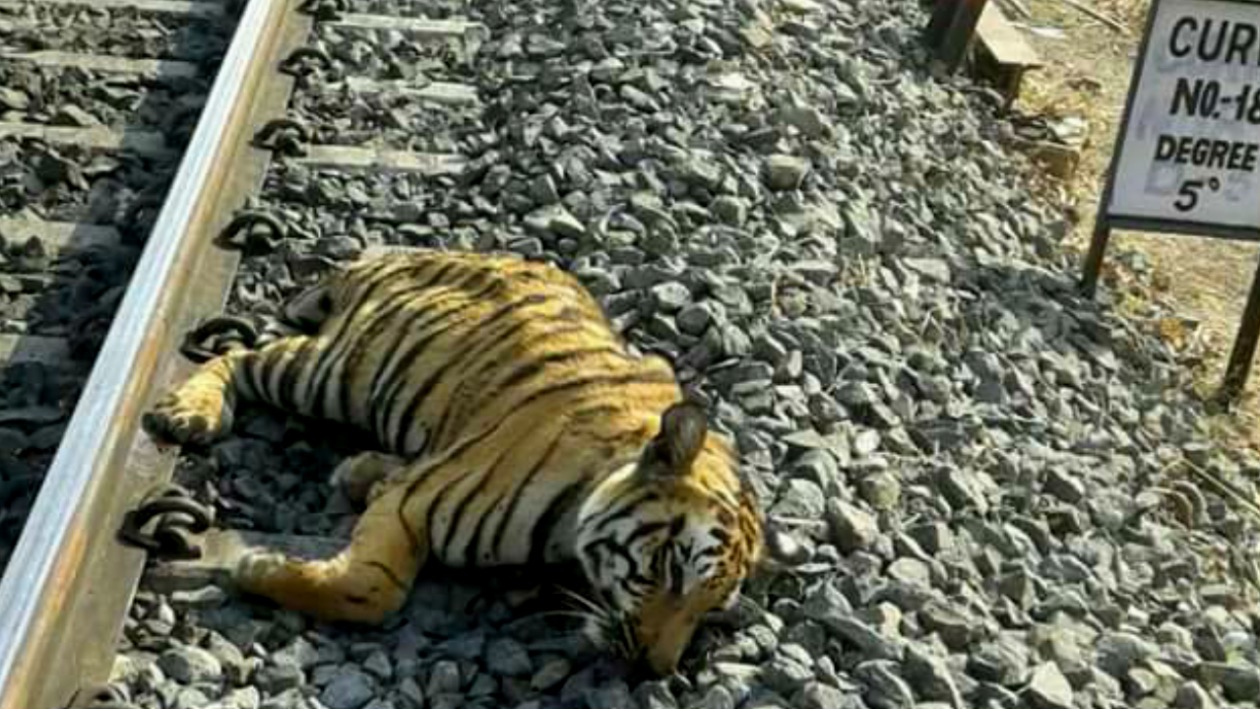
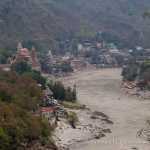




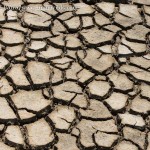

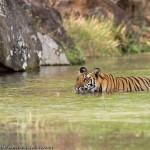



Thanks Sabyasachi for yet another fantastic “Newsletter”. You continually highlight very important issues that are either ignored or sidelined by both the Indian and the international press.
Kind regards,
Sean Yates.
P.S. Thank you for the birthday greeting.